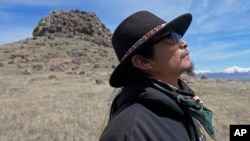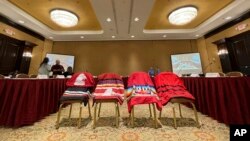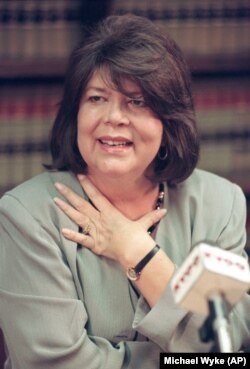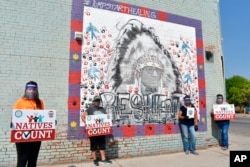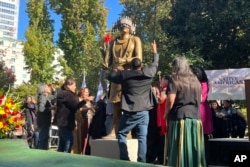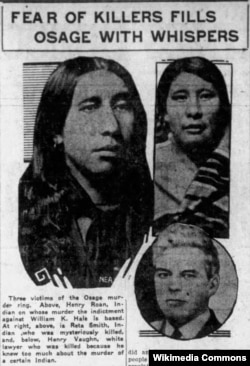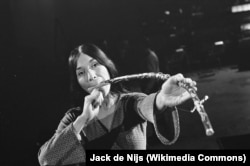Native Americans
Judge Rules Against Tribes in Fight Over Nevada Lithium Mine

A federal judge in Nevada has dealt another legal setback to Native American tribes trying to halt construction of one of the biggest lithium mines in the world.
U.S. District Judge Miranda Du granted the government's motion to dismiss their claims the mine is being built illegally near the sacred site of an 1865 massacre along the Nevada-Oregon line.
But she said in last week's order the three tribes suing the Bureau of Land Management deserve another chance to amend their complaint to try to prove the agency failed to adequately consult with them as required by the National Historic Preservation Act.
"Given that the court has now twice agreed with federal defendants (and) plaintiffs did not vary their argument ... the court is skeptical that plaintiffs could successfully amend it. But skeptical does not mean futile," Du wrote Nov. 9.
She also noted part of their case is still pending on appeal at the 9th U.S Circuit Court of Appeals, which indicated last month it likely will hear oral arguments in February as construction continues at Lithium Nevada's mine at Thacker Pass about 370 kilometers northeast of Reno.
Du said in an earlier ruling the tribes had failed to prove the project site is where more than two dozen of their ancestors were killed by the U.S. Cavalry Sept. 12, 1865.
Her new ruling is the latest in a series that have turned back legal challenges to the mine on a variety of fronts, including environmentalists' claims it would violate the 1872 Mining Law and destroy key habitat for sage grouse, cutthroat trout and pronghorn antelope.
All have argued the bureau violated numerous laws in a rush to approve the mine to help meet sky-rocketing demand for lithium used in the manufacture of batteries for electric vehicles.
Lithium Nevada officials said the $2.3 billion project remains on schedule to begin production in late 2026. They say it's essential to carrying out President Joe Biden's clean energy agenda aimed at combating climate change by reducing dependence on fossil fuels.
"We've dedicated more than a decade to community engagement and hard work in order to get this project right, and the courts have again validated the efforts by Lithium Americas and the administrative agencies," company spokesperson Tim Crowley said in an email to The Associated Press.
Du agreed with the government's argument that the consultation is ongoing and therefore not ripe for legal challenge.
The tribes argued it had to be completed before construction began.
"If agencies are left to define when consultation is ongoing and when consultation is finished ... then agencies will hold consultation open forever — even as construction destroys the very objects of consultation — so that agencies can never be sued," the tribal lawyers wrote in recent briefs filed with the 9th Circuit.
Will Falk, representing the Reno-Sparks Indian Colony and Summit Lake Paiute Tribe, said they're still considering whether to amend the complaint by the Dec. 9 deadline Du set, or focus on the appeal.
"Despite this project being billed as `green,' it perpetrates the same harm to Native peoples that mines always have," Falk told AP. "While climate change is a very real, existential threat, if government agencies are allowed to rush through permitting processes to fast-track destructing mining projects like the one at Thacker Pass, more of the natural world and more Native American culture will be destroyed."
The Paiutes call Thacker Pass "Pee hee mu'huh," which means "rotten moon." They describe in oral histories how Paiute hunters returned home in 1865 to find the "elders, women, and children" slain and "unburied and rotting."
The Oregon-based Burns Paiute Tribe joined the Nevada tribes in the appeal. They say BLM's consultation efforts with the tribes "were rife with withheld information, misrepresentations, and downright lies."
Native American Advocates Seek Plan to Handle Missing and Murdered Cases

Advocates are calling out New Mexico's Democratic governor for disbanding a task force that was charged with crafting recommendations to address the high rate of killings and missing person cases in Native American communities.
The Coalition to Stop Violence Against Native Women said in a statement Thursday that dissolving the panel of experts only helps to perpetuate the cycles of violence and intergenerational trauma that have created what many have deemed as a national crisis.
Gov. Michelle Lujan Grisham's office argues that the task force fulfilled its directives to study the scope of the problem and make recommendations and that the state remains committed to implementing those recommendations.
The push by the advocates comes just weeks after a national commission delivered its own recommendations to Congress and the U.S. Justice and Interior departments following hearings across the country and promises by the federal government to funnel more resources to tackling violence in Native American communities.
U.S. Interior Secretary Deb Haaland, who is from Laguna Pueblo in New Mexico, said earlier this month that lives will be saved because of the commission's work.
"Everyone deserves to feel safe in their community," Haaland said when the recommendations were announced. "Crimes against Indigenous peoples have long been underfunded and ignored, rooted in the deep history of intergenerational trauma that has affected our communities since colonization."
Her agency and the Justice Department are mandated to respond to the recommendations by early next year.
Almost 600 people attended the national commission's seven field hearings, with many giving emotional testimony.
Members of the Not Invisible Commission have said they hope the recommendations are met with urgency.
"With each passing day, more and more American Indian and Alaska Native persons are victimized due to inadequate prevention and response to this crisis," the commission said in its report.
Still, advocates in New Mexico say more work needs to be done to address jurisdictional challenges among law enforcement agencies and to build support for families.
"It's essential to recognize that MMIWR is not a distant issue or statistic; these are real-life stories and struggles faced by Indigenous families today. The impact has forced these families to adjust their way of life, advocate for themselves, deplete their savings, and endure stress-induced physical and mental illnesses," the Coalition to Stop Violence Against Native Women said.
The organization wants state officials to outline a clear plan for advancing New Mexico's response to the problem.
The New Mexico Indian Affairs Department said Thursday it is developing a dedicated web page and is planning regular meetings and other events aimed at bringing together families with tribal partners and local, state and federal officials.
Aaron Lopez, a spokesperson for the agency, said the task force's work remains foundational for the state in determining the best strategies for curbing violence against Native Americans.
The New Mexico Attorney General's Office also has a special agent who has been working with authorities to help recover people on the FBI's list of those verified as missing from the state and the Navajo Nation, which covers parts of New Mexico, Arizona and Utah. As of October, there were about 190 names on the list.
While budget recommendations are still being hashed out for the next fiscal year, the Indian Affairs Department already is asking for four new full-time staffers who would be dedicated to helping advance the state's response plan.
James Mountain, head of the department, told lawmakers during a recent hearing that the positions are "absolutely needed" to carry forward the state's work given that the agency serves numerous tribal nations and pueblos.
Native American News Roundup Nov. 5-11, 2023

Mattel honors Cherokee rights icon Wilma Mankiller
Citizens of the Cherokee Nation are delighted with the Mattel toy company’s release this week of new doll in its Barbie Inspiring Women series: Wilma Mankiller, the first female principal chief of the Cherokee Nation and a powerful social activist.
“When Native girls see it, they can achieve it, and Wilma Mankiller has shown countless young women to be fearless and speak up for Indigenous and human rights,” Cherokee Nation principal chief Chuck Hoskins Jr. said in a written statement. “She not only served in a role dominated by men during a time that tribal nations were suppressed, but she led. … She truly exemplifies leadership, culture and equality, and we applaud Mattel for commemorating her in the Barbie Inspiring Women Series.”
“We worked with Charlie Soap, Wilma’s husband, and Kristina Kiehl, Wilma’s longtime friend [who] gave us insight to not just Wilma’s brilliant career and achievements, but also sentimental insight like Wilma almost never wore heels and liked to get her nails done. So, the Wilma Barbie is wearing flats and has pink painted nails,” the doll’s designer Carlyle Nuera posted on Facebook.
By Thursday, the doll had sold out.
2020 Census: Native American/Alaskan Population Nearly Doubles
The U.S. Census Bureau has released new statistics for the American Indian and Alaska Native populations showing that they are one of the fastest growing ethnic groups in the United States.
In 2010, 5.2 million people in the United States identified as American Indian and Alaska Native population. A decade later, 9.7 million claimed Native American or Alaska Native identities.
Among the people who specified a tribal affiliation, Cherokees represent the largest American Indian population alone or in any combination population group in the United States, with 1,513,326 people. The Navajo Nation was the most common American Indian alone, with 315,086 people.
Among the 171,000 respondents who identified with a specific Alaska Native tribe, Yup’ik (Yup’ik Eskimo) came in as the largest Alaska Native alone group in the U.S., with 9,026 people. Tlingit was the largest Alaska Native alone or in any combination group with 22,601 people.
It should be noted, however, that with more and more Americans claiming Indigenous ancestors based on family lore or “Pretendianism,” these numbers may be hard to verify.
See more:
City of Sacramento honors Northern California tribes
Hundreds gathered in Sacramento on Tuesday for the unveiling of a new, 8-foot-tall bronze statue of Miwok leader and cultural preservationist William J. Franklin Sr.
The statue replaces a statue of Franciscan missionary Junipero Serra, the man who 300 years ago founded nearly two dozen missions, aiming to convert and “civilize” California Indians and give Spain a foothold in the region. Protesters tore down that statue in July 2020.
To learn more about Franklin Sr., read or listen to his interview with Elizabeth McKee, conducted as part of the Sacramento Ethnic Communities Survey Collection.
Indigenous drag queens combine drag queens and glitter
More than a dozen U.S. states have enacted or introduced legislation to restrict drag shows. It is the product of socially conservative momentum against events where performers who are mostly men dress mostly as women. Gustavo Martínez Contreras reports for VOA from a show in New Mexico that involves a unique all-Indigenous cast called “LaLa Land Back” and blends the camp of drag with Native American culture.
Osage Tribe Members Speak Their Minds About ‘Killers of the Flower Moon’

Martin Scorsese's "Killers of the Flower Moon” explores the “Reign of Terror,” a dark period in 1920’s Oklahoma when white cattle rancher William Hale orchestrated the murders of Osage tribe members to take land rich with oil.
Hollywood has a long history of misrepresenting Native Americans in film, and Osages were skeptical that Scorsese could do any differently. In July 2019, the famed director met with Osage Nation Principal Chief Geoffrey Standing Bear to discuss the tribe’s involvement in the film. The following October, he addressed more than 150 Osage tribe members who worried about how their ancestors and culture would be portrayed.
“My heart is in the right place,” Scorsese told them. “We won’t be finished with it until it’s right, I can promise you that.”
But did he deliver on his pledge? Among the “Reign of Terror” victims was Henry Roan, shot dead in early 1923. His great grandson, former Osage Chief Jim Gray, attended the meeting with Scorsese.
“When I had the chance to speak, I told him that the culture and language, traditions of the tribe, all these things that make us who we are today are not in the FBI files, and you're not going to find them in the book [of the same name by David Grann]. You'll find them in this room,” Gray told VOA. “We got the benefit of his willingness to listen and incorporate much of what he heard.”
‘Evil white characters’
Grann’s 2017 book reads like a detective novel, but after hearing from the Osage, Scorsese rewrote the script around Ernest Burkhart — nephew of the rancher Hale, ruthless mastermind behind the Osage murders — who married into an Osage family and eventually attempted to poison his wife, Mollie.
"The heart of the entire situation is love, the trust that goes with love, and then this extraordinary betrayal,” Scorsese told CBS News.
Christopher Cote, who served as the film’s language consultant, was unconvinced, telling reporters, “when somebody conspires to murder your entire family, that’s not love.”
George “Tink” Tinker, professor emeritus at the Iliff School of Theology in Denver, and a citizen of the Osage Nation, laughed before giving his opinion of the film.
“He did the best job any white man in this day and age could have done,” Tinker said. “Is it a movie about the Osages? No. It’s about two evil white characters who were busy murdering Osages.”
Hale is played by Robert DeNiro, while Burkhart is played by Leonardo DiCaprio.
“When you have big stars like that, you can't make the movie about these minor characters surrounding and supporting the narrative, namely the Osages,” Tinker added. “Even the character of Mollie Burkhart, who has more of a role than the other Osages, is silent throughout much of the film.”
Otoe-Missouria/Osage attorney Wilson Pipestem turned to Facebook, urging critics to be “gentle” with their words:
Shot on location in Oklahoma, the film’s supporting cast includes dozens of Osage actors in key parts.
Native American News Roundup Oct. 29 - Nov. 4, 2023
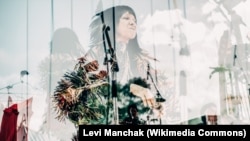
This week’s roundup focuses on a story that continues to dominate headlines:
The Buffy Sainte-Marie Scandal: Is she Indigenous?
Since bursting onto the folk music scene in the early 1960s, singer/ songwriter/Indigenous activist Buffy Sainte-Marie has claimed to have been born Beverley Sainte-Marie to an unknown Cree mother on the Piapot First Nation Reserve in the western Canadian province of Saskatchewan and adopted out to a Mi’kmaq (Micmac) family in New England.
There have been questions about inconsistencies in her account over the years.
Ontario’s Sault Times in July 1963, for example, identified her as Mi’kmaq from Canada’s Maritime provinces.
Detroit’s Free Press in October 1963 stated, “Buffy was born a Micmaq Indian in Maine and grew up with a part white, part Micmac family.”
Saskatoon’s Star-Phoenix in March 1966 identified her as a “full blooded Cree” brought up by a “Micmac Indian couple.”
Given the singer’s iconic status, no one publicly challenged her genealogy.
Until now.
Last week, the Canadian Broadcasting Corporation’s investigative series Fifth Estate revealed results of a year-long investigation claiming that her she was born Beverley Jean Santamaria in Stoneham, Massachusetts in 1941 to a white couple, Albert and Winifred Santamaria, and as an adult was adopted into a Piapot Cree family.
The report claims that when her brother Alan Santamaria moved to reveal her deception, she threatened him with allegations of sexual abuse.
Last week’s broadcast stunned Indigenous and non-Indigenous communities on both sides of the U.S.- Canada border.
The Indigenous Women’s Collective in Canada issued a statement calling for Sainte-Marie’s 2018 Juno music award to be rescinded.
Canadian music historian John Einarson, who wrote a 2006 documentary called Buffy Sainte-Marie: A Multimedia Life, expressed his disappointment on Facebook.
“I feel a sense of betrayal that Buffy engaged in a deceit for decades and after so much praise for her as an Indigenous Canadian,” he posted. “There have been ample opportunities in her 60-year career to ‘come clean’ on her falsehoods but instead she continually modified her ‘story’, doubling down, obfuscating and waffling. That, to me, is unforgiveable and all her great works are stained now by that.”
Others have condemned the CBC investigation.
“For some inexplicable reasons...some Native people seem to be questioning her truth," Native American land rights activist Winona LaDuke wrote on Facebook.. Why that would occur baffles me. Time to stop hating our own...time to quit witch hunting. Time to respect and love our people...time to move towards a real healing and survival.
One day before the report aired, Buffy Sainte-Marie posted a video statement on Facebook denying the allegations.
“I’m lucky to have had two families to love: a growing up family who were wonderful and my Piapot family, who are also wonderful,” she said. “There are also many things I don't know which I've always been honest about. I don't know where I'm from, who my birth parents are or how I ended up a misfit in a typical white Christian New England town.”
Facts of her adoption
No one disputes her custom adoption into a Piapot Cree family.
According to accounts in Saskatchewan’s Leader Post newspaper and elsewhere, in early August 1962, Sainte-Marie, then 21, attended the Wikwemikong Pow Wow on Ontario’s Manitoulin Island, where she met and was subsequently adopted by Emile and Clara Piapot, something the singer called the “highlight of her life.”
The elder Piapots are no longer living, but younger family members have come out to defend Sainte-Marie.
“Our grandparents filled the holes in their hearts by adopting Buffy after losing several children to illness and disease …” Debra and Ntawnis Piapot said in a written statement. “Buffy is our family …To us, that holds far more weight than any paper documentation or colonial record keeping ever could.”
Anishinaabekwe musician and activist ShoShona Kish told CBC that she isn’t interested in debating Sainte-Marie’s indigeneity.
“We are sovereign nations, and we can decide our own citizenship,” she said.
Others disagree, citing differences between traditional or "customary" adoptions and legal adoptions.
VOA reached out to Kim TallBear, a member of the Sisseton Wahpeton tribe in South Dakota and a professor of Native Studies at the University of Alberta.
“There are some First Nations bands in Canada that do allow legally adopted children to enroll in the band, and in the United States, enrolling spouses and legally adopted children in tribes was very common pre-World War Two,” she said.
But Sainte-Maries’ adoption was purely ceremonial.
“These don’t make people tribe members or First Nation citizens,” TallBear explained. “Tribal rules around citizenship and membership are very legalistic, like the rules around U.S. and Canadian citizenship, and they rely on documentation.”
For his part, Piapot First Nation acting chief Ira Lavallee told CBC he understands people’s sense of betrayal.
"When it comes to Buffy specifically, we can't pick and choose which part of our culture we decide to adhere to … We do have one of our families in our community that did adopt her. Regardless of her ancestry, that adoption in our culture to us is legitimate."




